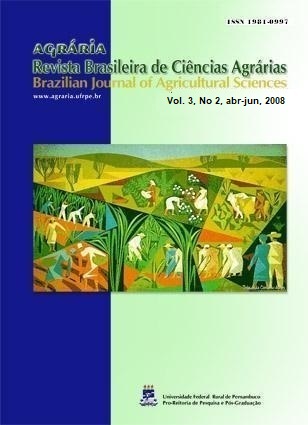Population growth of the rotifer <i>Brachionus plicatilis</i> Müller, 1786, fed on microalgae and formulated diet
DOI:
https://doi.org/10.5039/agraria.v3i2a309Keywords:
zooplankton, Isochrysis galbana, Nannochloris sp., culture selco plusAbstract
The present study evaluated the population growth of the Brachionus plicatilis fed with microalgae and formulated diet in two experiments. In experiment 1, each experimental unit was stored with 50 rotifers mL-1, using the microalga Isochrysis galbana in the cellular densities of 50x104 cells mL-1 and 500x104
cells mL-1, and formulated diet Culture Selco® Plus (CSP). There were no significant differences in the rotifers daily densities, however the highest final density occurred with rotifers fed with microalga in the density of 50x104 cells mL-1 (268 rotifers mL-1). In experiment 2, the experimental units were stored with 200 rotifers mL-1 and the feeding was based in the microalgae I. galbana and Nannochloris sp., both with the cellular density of 50x104 cells mL-1 and formulated diet. In this experiment, the highest final density (402 rotifers mL-1) was observed when the rotifers were fed with formulated diet. However, there were significant difference (p < 0.05) in the daily population growth of the rotifers. B. plicatilis reach the highest population density and showed multiple eggs when fed with formulated diet (CSP).



